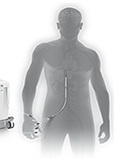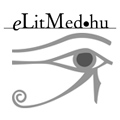The eLitMed.hu medical portal uses computer cookies for convenient operation. Detailed information can be found in the Cookie-policy.
Journal of Nursing Theory and Practice - 2015;28(01)
Content
[The significance of post-reanimation treatment using therapeutic hypothermia in the intensive care ward]
[Aim of the research: To assess the significance of applying therapeutic hypothermia (TH) in order to prevent cerebral neurologic damage following cardiopulmonary resuscitation (CPR). Research and sampling methods: Retrospective and quantitative research, applying stratified, not random sampling. The research was conducted by analysing medical and clinical nurse documentation, using direct data collection. The total number of patients (n) referred to the intensive care ward of county hospital due to prolonged life support (PLS) during the two different years was 68. In 2005, the number of patients (n) not receiving TH was 28 whereas in 2010 the number of patients who did receive TH was 29 and the number of those who did not receive TH in the same year was 11. Results: Comparing the research results of the two patient groups, it can be concluded that the patients who received TH in 2010 left the intensive care ward with better neurological function, no significant difference. PLS carried out with full body cooling proved to be more effective by decreasing hypoxic damage in the brain tissue, in consequence of which better neurological results are expectable. Conclusion: the application of TH is necessary following CPRs when the patient remains unconscious even after regaining spontaneous circulation. In everyday practice of intensive care wards, TH should be applied as per standard protocol. All clinical nurse staff should be aware of the cooling techniques and of the use the necessary medical equipment. Practical application and the earliest possible start of TH can be done more effectively by improving the nurses’ relevant knowledge, providing higher financial support and expanding the circle of medical equipment. ]
[Knowledge on elderly home care residents’ rights among caregivers and nurses körében]
[Aim of the study: To survey the awareness of carers and nurses regarding to patients’ rights as outlined in Act III of 1993 and Act CLIV of 1997, regulating welfare management, welfare services and health care. Sample and methods: The survey was conducted with the means of data collection with questionnaires, analysis of documents and statistical methods. The Survey was conducted in December 2013 and January 2014. The sample of respondents consisted of the carers and nurses of the Gödöllő unit of the Budapest Metropolitan Home for the Elderly. The analysis of the document aimed to introduce the of the house rules of the Home. The author used SPSS 22 statistical software to analyse the data collected with questionnaires. A chi squared test was employed to investigate the relations between the descriptive statistical methods and variables. Results: The knowledge of carers and nurses have deficiencies in the area of patients’ rights. They are more familiar with the rights provided for by the welfare act, as the majority of the workers have worked in the welfare area for a long time, and, in the course of their work have become aware of the rights described by the act in question. Conclusions: as the workers had no possibility to familiarise themselves with the patients’ rights during their education, the Home is to provide the workers with adequate training to make up for the above mentioned lack of knowledge. ]
[Value research of students in the patient care sector. Research carried out in a vocational secondary school]
[Aim of the study: Mapping out the value system, the professional motivation and the socio-cultural background of care provider students at the Zsuzsanna Kossuth Vocational Secondary School Sample and methods: Descriptive type research, number of elements 169 (n=169). The data was synthesized with Microsoft Office Excel 2007. Results: Taking into consideration the influence of the parents’ educational and professional background it can be stated that the parents’s influence gains control of their children’s school choice. In every analyzed group students are backed by strong family support. Regarding their career choice most students were motivated by the desire to help people. Graduate students demonstrate a more consistent career choice than younger students. The most important values of the care provider career proved to be: professional knowledge, know-how, responsibility and precision. An increase in career values related to age has not been demonstrated. Conclusions: It is very important to know the students’s value system because the values gained in the family and at school play a determining role in the care providers’s job. ]
[The founder of industrial nurse training in Hungary, Maria Baloghy was born 120 years ago]
[Maria Baloghy, founder of industrial nurse training in Hungary, was born 120 years ago at Košice. This short paper intends to commemorate her merits, which remained valid even after long decades after her death]
1.
Clinical Neuroscience
[Headache registry in Szeged: Experiences regarding to migraine patients]2.
Clinical Neuroscience
[The new target population of stroke awareness campaign: Kindergarten students ]3.
Clinical Neuroscience
Is there any difference in mortality rates of atrial fibrillation detected before or after ischemic stroke?4.
Clinical Neuroscience
Factors influencing the level of stigma in Parkinson’s disease in western Turkey5.
Clinical Neuroscience
[The effects of demographic and clinical factors on the severity of poststroke aphasia]1.
2.
Clinical Oncology
[Pancreatic cancer: ESMO Clinical Practice Guideline for diagnosis, treatment and follow-up]3.
Clinical Oncology
[Pharmacovigilance landscape – Lessons from the past and opportunities for future]4.
5.






